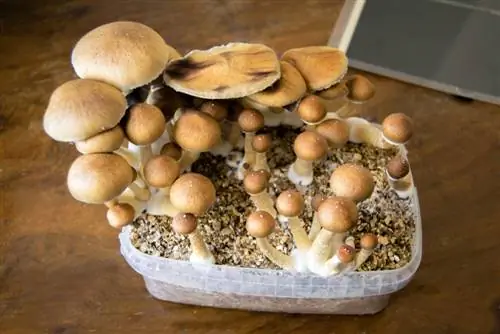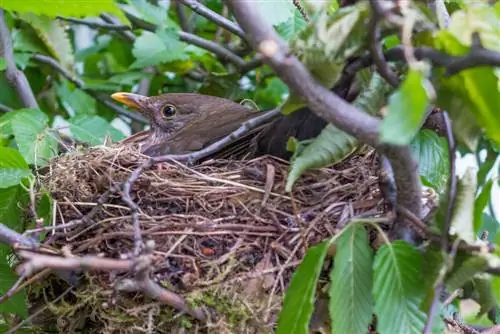- Author admin [email protected].
- Public 2023-12-16 16:46.
- Last modified 2025-06-01 06:02.
For some passionate hobby gardeners it is not enough to simply plant roses in the garden and care for them with devotion; they would like to grow beautiful roses themselves and perhaps - with a bit of luck - create their own varieties. Growing roses is a beautiful and demanding hobby, but it requires some technical basics: you need to know how to cross roses.

How do you cross roses for breeding?
To cross roses, carefully remove the male pollen sacs from a flower, store them for a few days and loosen the pollen. Using a fine brush, transfer this to the female pistil of another rose - aluminum foil protects against cross-pollination.
Create your own rose varieties through crossing
Anyone who breeds roses through vegetative propagation or grafting does not create new varieties, but rather merely clones of the mother plant. If you want to breed completely new rose varieties yourself, you have to do so by seed propagation. However, you need a good bit of luck because rose seeds with very different ancestors (many of which may not even be known yet) can produce all sorts of things - just maybe not necessarily the desired result. For this reason, it is advisable to keep a breeding book - if you do the pollination yourself and don't want to leave everything to chance. By the way: Not only cultivated roses develop from seeds, but often also the original wild roses. Rose breeding is and remains a very exciting hobby!
How does crossing work?
Every rose flower is hermaphrodite, i.e. H. she has male and female organs. In order for rose hips to develop with seeds, these flowers must be pollinated by another rose. This can either be done by the grower or left to nature by planting different types of roses in a bed and waiting to see what happens. The corresponding offspring are then raised and - if they have desirable characteristics - further selected and crossed with each other. It is important not to continue using roses with undesirable properties for breeding.
Which roses are suitable for crossing?
Not every variety or species of rose is suitable for crossing, because some particularly noble cultivated roses are completely sterile and can therefore only be obtained through vegetative propagation. Other varieties - especially those with heavily double flowers - have very stunted sexual organs, so that pollination is difficult or even impossible. Still other roses produce little or no rose hips at all.
Crossing roses - this is how you do it
If you have now found parent roses that produce ripe rose hips with seeds in them, you can pollinate them by hand. This should be done on flowers that are just beginning to open, thereby ensuring that pollination by bees etc. has not yet taken place. Do the procedure early in the morning to avoid busy insects.
- Carefully remove the male pollen sacs (located around the female pistil),
- for which it is best to use a small, sharp knife.
- Put these in an airtight container and keep for a few days.
- Shake the can several times to loosen the pollen.
- Now take a fine brush (€4.00 on Amazon) and transfer the pollen to the pistil of another rose.
- Wrap the pollinated flower with aluminum foil to protect it from cross-pollination.
- The film can be removed after a few days.
Tip
In autumn, collect the ripe rose hips to use them to obtain seeds. The seeds are sown and then it's time to wait and hope for the best. However, not all rose hips produce germinable seeds.






